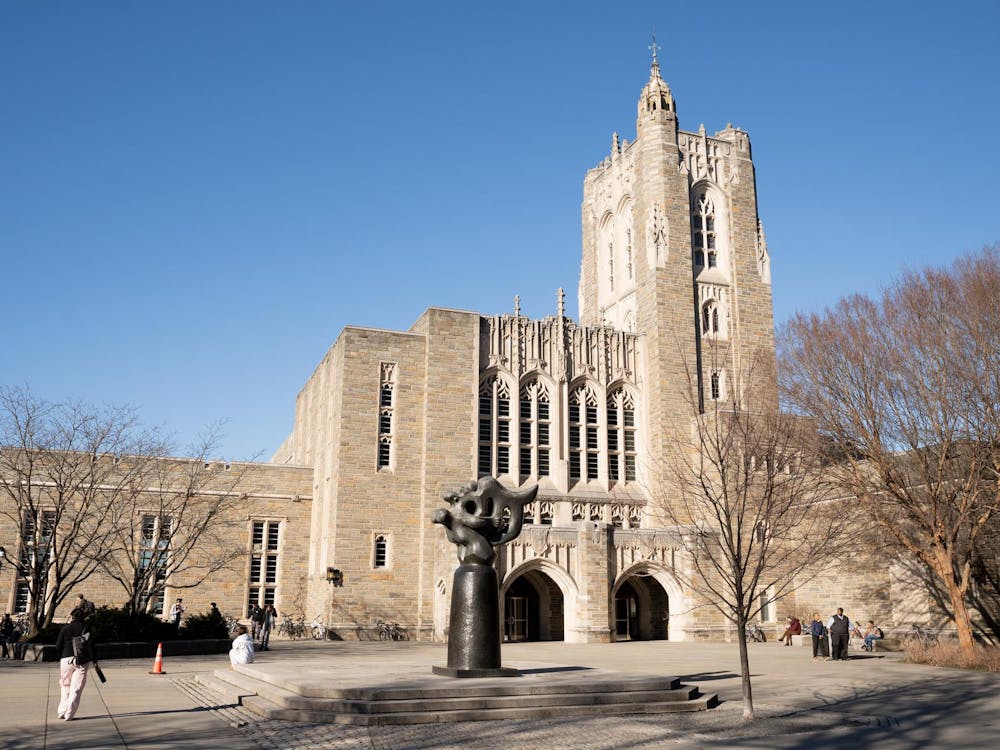Over the last century, women have attained and even surpassed equal representation at U.S. colleges and universities to men — women now make up almost 60 percent of bachelor’s degrees awarded. Over the last few decades, women have also made huge strides post-college education: in the early 1980s, women made up only 30 percent of doctorate degrees — they now make up 54 percent. It‘s only natural that women are now also equally represented in the top levels of University administration — they are in charge of four out of the eight Ivy League schools. But recent events, such as Claudine Gay’s departure from her position as president of Harvard University, spark an important conversation on the ways in which meritocracy, race, and gender intersect in academic leadership. This present era calls for us to reevaluate our dedication to diversity and justice at the highest levels of government, especially in light of the different challenges that women face on the path to leadership at elite universities.
The broadening gender diversity among elite institutions presents a compelling story on the far-reaching impacts for the future of higher education. The increasing number of appointments of female leaders call for a new age of a more equitable distribution of academic power after a long era of monopoly on leadership by male leaders.
It’s one thing to acknowledge women’s numerical representation in the highest echelons of academic governance, but it’s also important to acknowledge their qualitative impact — why it’s important that they’re there. The Harvard Gazette reported on the significant strides made by women in leadership positions, indicating the changing landscape within Ivy League universities. And representation is not only important as symbolism: different people of different backgrounds have different experiences to draw on, and this can lead them to reach different conclusions. A diverse leadership team often does better, and this includes gender diversity at the highest levels of university leadership. But we shouldn‘t forget about the countless other university administrators and staff members down the chain of command that help carry out the vision of the institution.
The legacy of past female leaders must not obscure the pervasive hurdles that remain. While significant progress has been made, there still remains considerable room for improvement in enhancing the underrepresentation of women in academic leadership. A disproportionate dropout rate of women from leadership-oriented academic tracks provide further evidence of how issues with the leadership pipeline may contribute to this underrepresentation.
Moreover, work-life integration challenges resulting from the dual burden of work and familial responsibilities disproportionately affect women. Cultural biases also persist, with stereotypes and implicit biases continuing to hinder the ability of women to ascend to leadership positions.
Additionally, women often report fewer opportunities for mentorship and sponsorship, factors which may be crucial for future career advancement. Salary and negotiation gaps are also evident in the workforce, where studies indicate that women often receive lower starting salaries and are less likely to negotiate pay increases. As the cumulative consequence of all these factors, the lack of visibility of women in high-profile positions can perpetuate a cycle where women are less likely to aspire to these roles.
These might be some of the reasons why the proportion of women in university presidencies has remained stagnant at around 30 percent for the past decade. This is representative of a broad, systemic issue that resonates with many who strive for equity within academia. As we consider the path forward, we must ensure that our strides toward gender parity are not mere formalities, but rather genuine reflections of our institutional commitments to inclusivity.
At Princeton, that means ensuring that there is upward career growth available for women. Women make up only 33 percent of tenured and tenure-track faculty, the people who could be potentially in line for higher administrative leadership at the University. Princeton must do better than this, starting with solving the problems outlined above that lead to dropout from leadership tracks: fewer resources for career advancement, responsibilities to family and work, and persistence of cultural biases against women in the workplace. Princeton must embody for itself and for its leadership the principles of equity and representation that we seek to instill in our graduates.
As I reflect from the grounds of Princeton, I see these recent changes in female leadership as a beacon guiding us toward a horizon rich with potential for gender diversity and equity. The presence of female presidents across the Ivy League does more than alter our views on inclusivity in the higher education space: it revitalizes our belief in the power of education as an engine for positive social transformation.
Maria Luisa Vieira Parada is a sophomore from São Paulo, Brazil, majoring in physics. She can be reached at mparada[at]princeton.edu.









